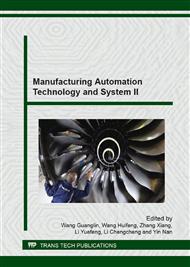p.582
p.588
p.594
p.599
p.605
p.611
p.617
p.627
p.633
Research on Real Time Monitoring of Carbon Deposition Engine Mixed Gas Removal Process
Abstract:
Mixed gas carbon removal vehicle running at idle state, sometimes the oil supply and power supply system of abnormal automatic flameout, the mixed gas carbon removal machine is still in the work of gas production, gas constant input of hydrogen to the engine, when the cylinder is filled with hydrogen after losing internal pressure gas pipeline and oxyhydrogen machine increased, easy for oxyhydrogen machine damage or accidents. In addition, when the vehicle engine is started again, because the cylinder is filled with hydrogen and oxyhydrogen gas mixture, ignition is easy to trigger detonation, causing serious damage to the engine of the car. Therefore, it is necessary to mixed gas carbon removal process real-time monitoring. This paper completes the real-time monitoring of oxyhydrogen carbon removal machine working process through the software and hardware design. The engine sound, vibration signals are extracted using the sensor, signal processing to extract the amplification, modulation for the switching signal for PLC identification. PLC switch signal from received signal extraction, the judge to eliminate interference, complete the oxyhydrogen carbon removal machine in addition to real-time control carbon process.
Info:
Periodical:
Pages:
605-610
Citation:
Online since:
August 2014
Authors:
Keywords:
Price:
Сopyright:
© 2014 Trans Tech Publications Ltd. All Rights Reserved
Share:
Citation:


